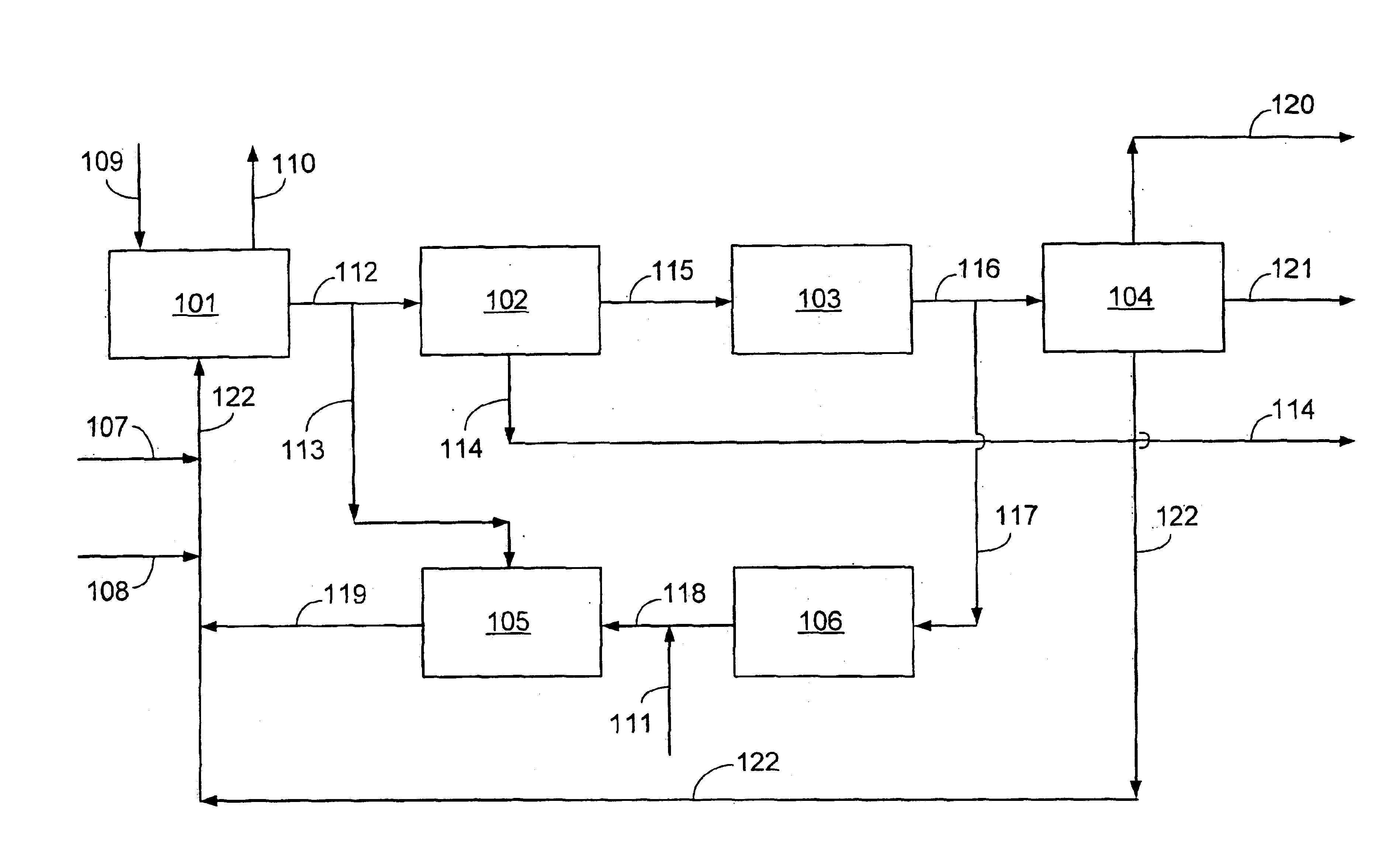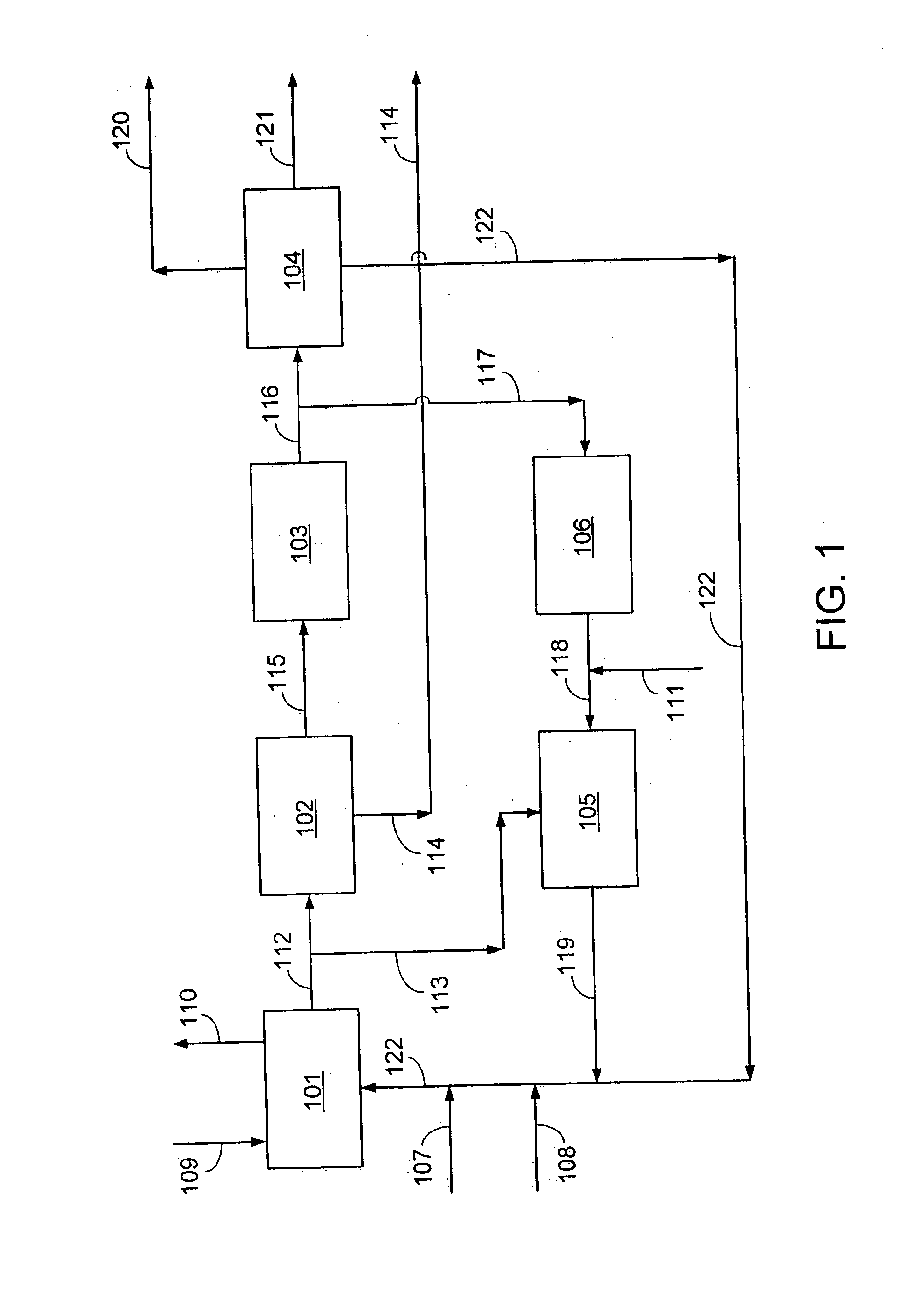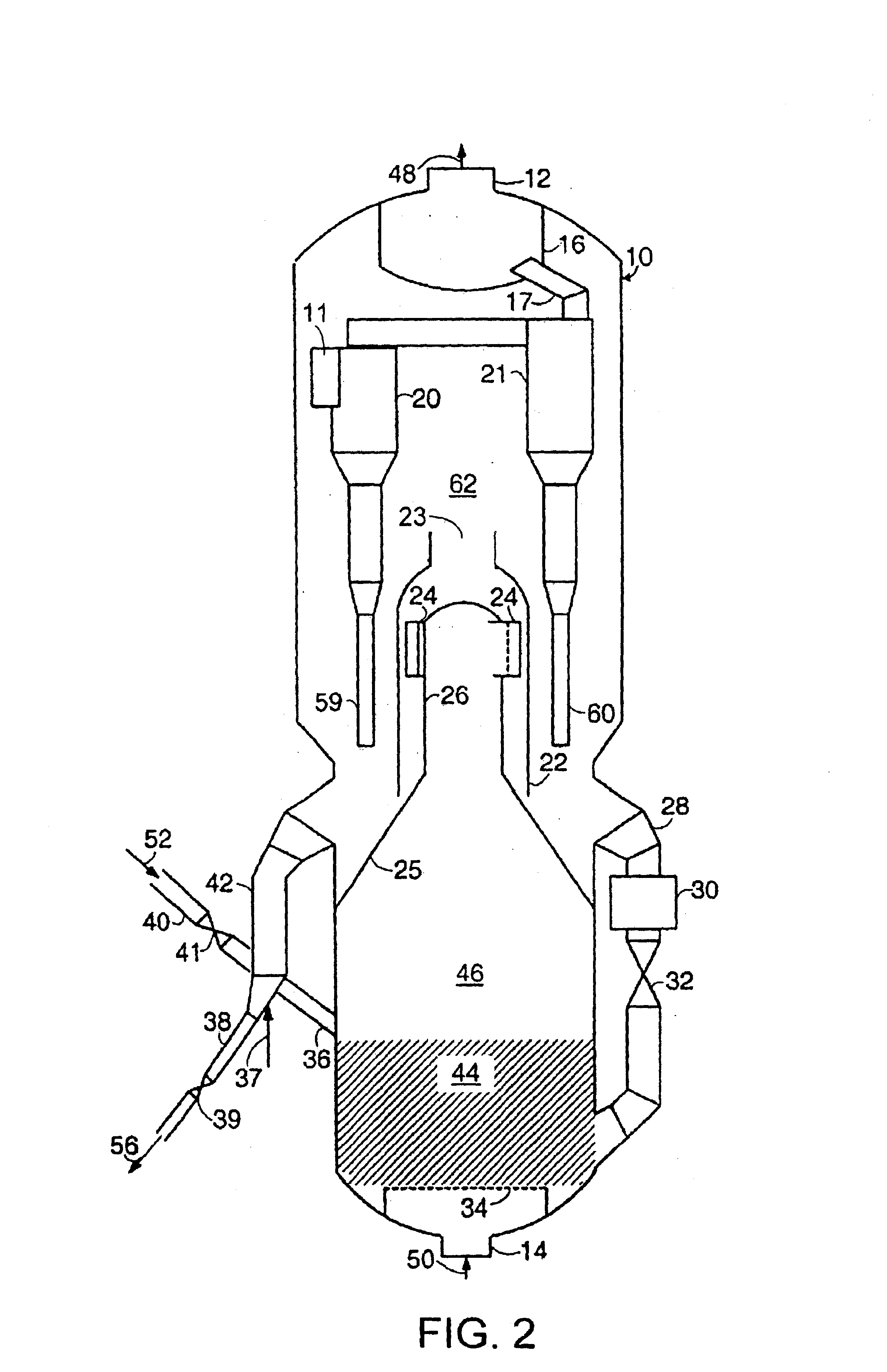Start-up of a methanol-to-olefin process
a technology of methanoltoolefin and olefin, which is applied in the direction of organic chemistry, chemistry apparatus and processes, hydrocarbon preparation catalysts, etc., can solve the problems of substantial additional loss, substantial hurdles to overcome, and additional loss, so as to avoid capital cost and operating and maintenance costs
- Summary
- Abstract
- Description
- Claims
- Application Information
AI Technical Summary
Benefits of technology
Problems solved by technology
Method used
Image
Examples
Embodiment Construction
The present invention will be described specifically in an MTO embodiment where it is has been established to have great utility thereby allowing someone of ordinary skill in the art to make the necessary modifications for its application in the broader embodiments mentioned above by substitution of the well-known specifics of other included areas of application. In other words, a specific example is used here to enable practice of the instant start-up method in other applications mentioned hereinbefore.
The starting point for the present invention in an MTO embodiment is a MTO conversion step which utilizes methanol as the principal source of the oxygenate reactant. As explained hereinbefore, there are essentially two different approaches to the catalytic conversion of methanol to light olefins. The principal distinction between these two approaches is based on the type of molecular sieve which is used as the active ingredient in the MTO catalyst system and I prefer the non-zeolitic...
PUM
| Property | Measurement | Unit |
|---|---|---|
| Temperature | aaaaa | aaaaa |
| Fraction | aaaaa | aaaaa |
| Angle | aaaaa | aaaaa |
Abstract
Description
Claims
Application Information
 Login to View More
Login to View More - R&D
- Intellectual Property
- Life Sciences
- Materials
- Tech Scout
- Unparalleled Data Quality
- Higher Quality Content
- 60% Fewer Hallucinations
Browse by: Latest US Patents, China's latest patents, Technical Efficacy Thesaurus, Application Domain, Technology Topic, Popular Technical Reports.
© 2025 PatSnap. All rights reserved.Legal|Privacy policy|Modern Slavery Act Transparency Statement|Sitemap|About US| Contact US: help@patsnap.com



